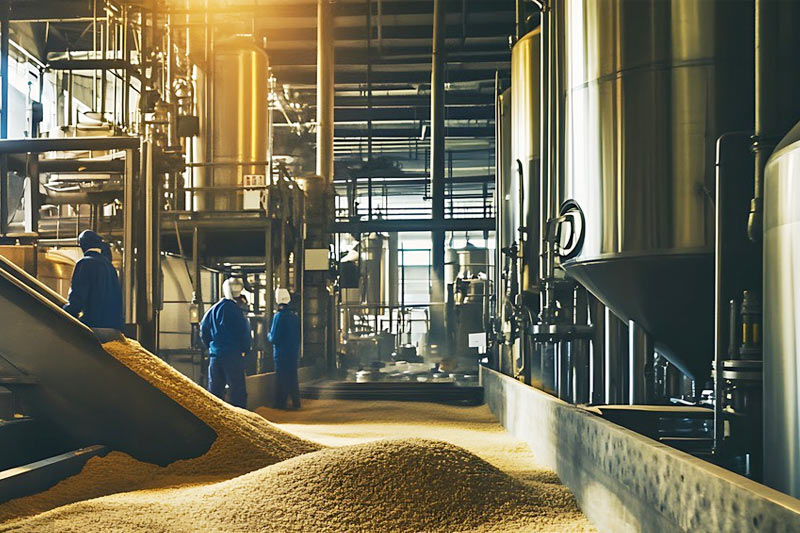What is commercial brewing equipment?
Commercial brewing equipment is professional equipment used for large-scale production of beer, wine, or other beverages. It contains core components such as fermentation tanks, mash systems, filtration systems, and cooling systems to help achieve efficient and stable brewing processes. The equipment is usually used in wineries, craft breweries, and beverage production companies to meet market supply needs.
- Large-scale production: Commercial brewing equipment focuses on large-scale production, can handle large amounts of raw materials, and adapts to high-volume needs.
- High degree of automation: Equipped with advanced automated control systems, it can accurately control brewing parameters and reduce manual intervention.
- High efficiency: Improve production efficiency, reduce resource waste, and reduce costs through optimized design.
- Flexible configuration: According to different brewing needs, the equipment can be customized or combined to adapt to the production of a variety of products.
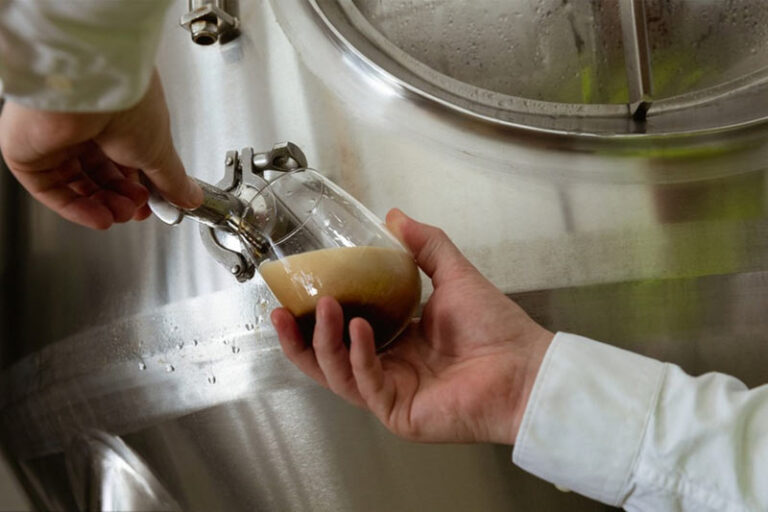
Basic components of commercial brewing equipment
Malt crusher
A malt crusher is a device used to crush malt particles into appropriate particle sizes in beer brewing. Its main purpose is to crush the malt so that starch and enzymes can be better released during the mash process to promote the mash reaction.
Mash equipment
- Mash pot: During the mashprocess, malt is mixed with water and heated to convert the starch in the malt into fermentable sugar.
- Filter tank: Used to separate solids and liquids in the mashprocess to obtain clear wort.
- Boiling pot: The boiling pot boils the filtered wort and adds hops.
- Spinning tank: Used to remove solid residues in the boiled wort. The wort is rotated to concentrate the sediment to the bottom.
Fermentation equipment
- Fermentation tank: Used in the fermentation process, yeast converts sugar into alcohol and carbon dioxide. It can be divided into open and closed fermentation tanks.
- Temperature control system: Used to control the temperature during the fermentation process to ensure that the yeast can work under optimal conditions.
Cooling equipment
- Cooler: used to quickly cool the boiled malt liquid to a temperature suitable for fermentation.
- Plate heat exchanger: uses thin plates to exchange heat, has high heat exchange efficiency, and is widely used in beer brewing.
Packaging equipment
- Bottle filling machine: used to fill liquor into bottles and seal them, suitable for bottled liquor.
- Canning machine: used to fill liquor into cans, suitable for canned beer and other products.
- Capping machine: caps bottles or cans to ensure the sealing of products.
- Labeling machine: labels bottles or cans.
CIP system
CIP system refers to equipment that automatically cleans the inside of the equipment, and can complete internal cleaning without manual disassembly. It circulates the cleaning fluid in the system to remove residues and microorganisms to ensure the hygiene and safety of the production environment.
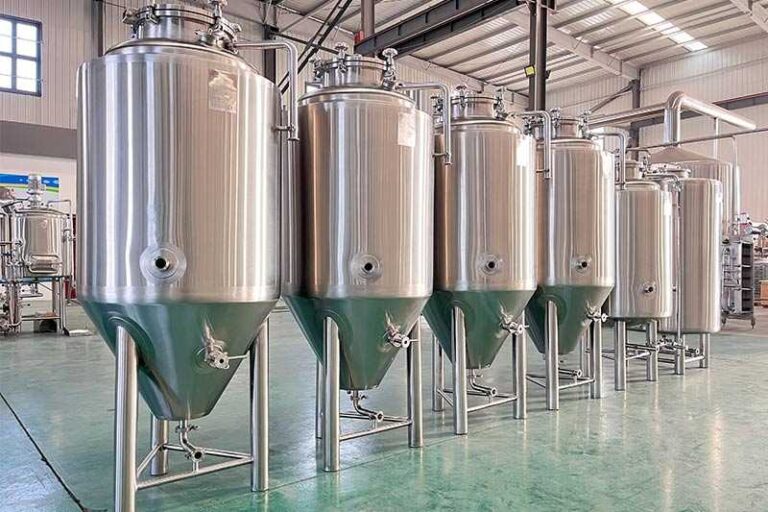
Factors to consider when purchasing commercial brewing equipment
Production capacity
- Small brewing equipment: Suitable for small-scale production, such as craft breweries, catering venues, and experimental production. Usually, the equipment is small in scale and easy to operate and maintain.
- Medium-sized brewing equipment: Suitable for medium-sized breweries, can meet certain production needs, and has certain automation and intelligent functions.
- Large-scale brewing equipment: Suitable for large-scale production, the equipment is generally more complex, with a high degree of automation and strong production capacity, which can meet the needs of large-scale production.
Equipment material
- Stainless steel: Due to its corrosion resistance, high temperature resistance, and easy cleaning properties, stainless steel is the preferred material for most brewing equipment.
- Carbon steel: Compared with stainless steel, carbon steel has a lower cost, but poor corrosion resistance, and usually requires coating.
- Aluminum alloy: Lightweight and has good thermal conductivity, but not as durable as stainless steel
Heating method
- Steam heating: Steam is generated by a boiler to transfer heat to the interlayer or heat exchanger of the brewing equipment. The heat is evenly distributed and controllable, suitable for long-term heating.
- Electric heating: The equipment is heated by converting electrical energy into thermal energy through electric heating rods or electric heating tubes. The equipment occupies a small area, but the electricity cost is high and the long-term use cost is high.
- Direct fire heating: The bottom or side of the brewing equipment is directly heated by burning open flames. The initial investment is small and no additional boiler or electric heating system is required.
Brand and after-sales service
Choosing equipment from a well-known brand usually means that the equipment quality is more guaranteed and the after-sales service is more complete. When choosing equipment, it is recommended to choose a supplier with a good reputation and establish a long-term cooperative relationship.
Cost and budget
The initial cost of equipment procurement may be high, but the durability and long-term operating cost of the equipment should be considered. At the same time, the operating costs of the equipment such as daily maintenance, power consumption, and consumables also need to be taken into account.
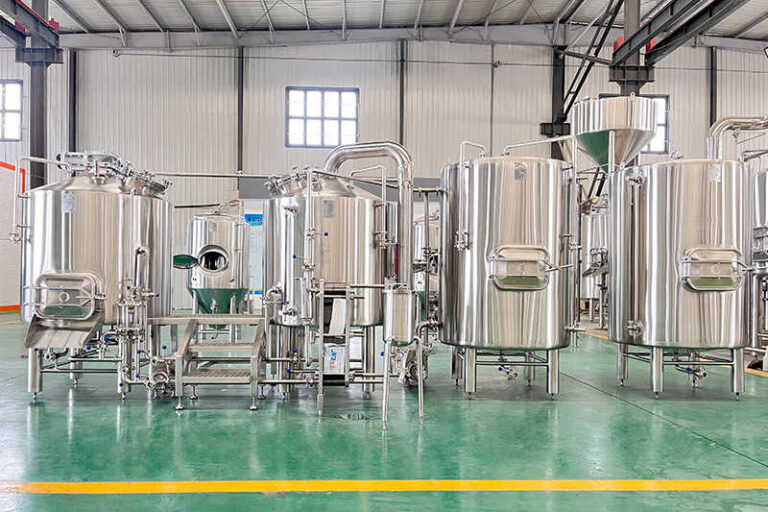
The difference between an automatic brewing system and a manual control system
Fully automatic brewing system
The fully automatic brewing system is a highly integrated automatic control system that realizes the full process of production automation control. It is usually equipped with sensors, automatic valves, temperature control systems, liquid delivery systems, and other equipment. The fully automatic brewing system can work 24 hours a day, greatly improving production efficiency. Automatic control ensures the quality consistency of each batch of products and reduces human errors.
Semi-automatic brewing system
The semi-automatic system still requires human participation in some links of brewing, such as the addition of raw materials and the adjustment of some operations. This type of system usually combines automation and manual operation, with high flexibility. Due to the manual operation of some links, the investment cost of the system can also be reduced. It is suitable for production environments with small production scale or flexible operation.
Manual control system
The manual control system relies entirely on manual operation, and every link in all brewing processes requires manual monitoring and adjustment. Although the degree of automation is low, it is still used in some handicraft brewing or small-batch customized production. Compared with the automated system, the equipment investment cost is lower. In some scenarios that emphasize traditional craftsmanship, manual brewing has unique cultural value.
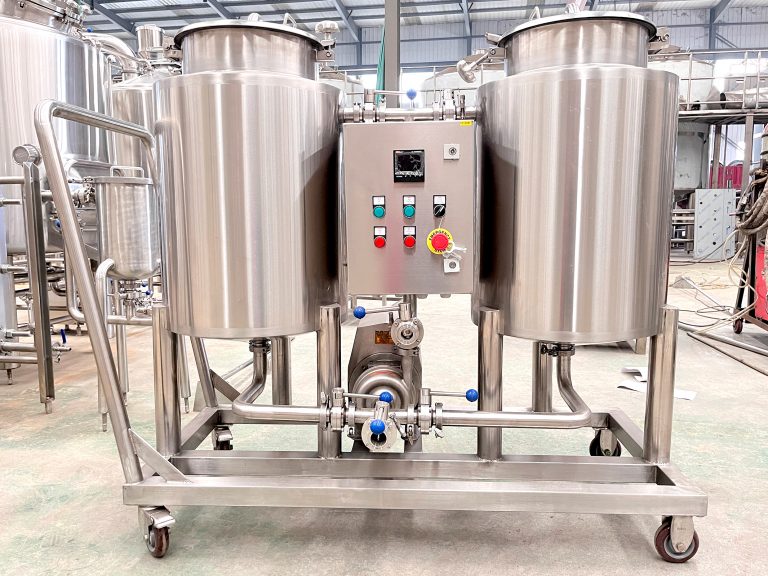
Future Trends in Commercial Brewing Equipment
- Sustainability and Green Technology: Energy conservation, emission reduction, and environmental protection are important development directions for brewing equipment in the future. Modern equipment reduces energy consumption by optimizing heat exchange and fermentation processes, while wastewater, waste gas, and waste treatment technologies continue to advance, helping breweries achieve a greener and lower-carbon production method.
- Precision fermentation and intelligent control: Future brewing equipment will ensure the stability of product quality by accurately controlling key parameters in the fermentation process. Intelligent fermentation systems can be adjusted based on real-time data, reduce manual intervention, and improve product consistency. In addition, with the advancement of biotechnology, the optimization of brewing yeast and microorganisms will further enhance the taste and flavor of products.
- Smart packaging and supply chain optimization: As consumers demand more transparency in products, smart packaging technology will be widely used, and RFID tags and QR codes will help consumers understand the production process, ingredients, and sources of products. In addition, breweries will also use smart logistics and warehouse management systems to optimize the supply chain, improve distribution efficiency, and reduce waste.
Summary
When choosing commercial brewing equipment, you first need to decide on the type and capacity of equipment based on production scale and demand to ensure that it can meet the needs of daily output and future growth. Equipment quality is crucial. High-quality equipment can improve production efficiency and reduce the frequency of failures and repairs. Technical support and after-sales service are also an important consideration. The timely help provided by the supplier can solve problems encountered in operation and ensure a smooth production process. Modern brewing equipment is equipped with an automated control system that can improve production efficiency, reduce manual intervention, and ensure consistency in brewing quality. The difficulty of cleaning and maintaining the equipment also needs attention. Choosing equipment that is easy to clean can help maintain production hygiene and reduce the risk of contamination. In addition, the budget is also an important consideration. Reasonable investment can ensure the cost-effectiveness of the equipment while estimating long-term operating costs.

